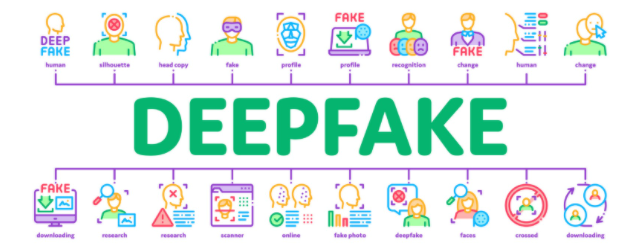We need AI-backed technological tools to detect the unreal
The protesters who created chaos in Capital Hill on January 6 believe that the 2020U.S. election was stolen by the Democrats. This is largely due to misinformation and disinformation of which deepfakes are a part. Deepfakes- synthetic media, meaning media(including images, audio and video) that are either manipulated or wholly generated by Artificial Intelligence- even have the power to threaten the electoral outcome of the World’s oldest democracy. Several social media platforms blocked President Donald Tromp’s accounts after the attack.
The cyberworld has been facing the challenge of deepfakes for a while now. AI is used for fabricating audios, videos and texts to show real people saying and doing things they never did, or creating new images and videos. These are done so convincingly that it is hard to detect what is fake and what is real. Detection can often be done only by AI- generated tools. Several books caution us against the threats of AI-generated content comprising non-existent personalities, synthetic datasets, unreal activities of real people, and content manipulation. Deepfakes can target anyone, anywhere. They are used to tarnish reputations, create mistrust, question facts, and spread propaganda.
In October 2020, the U.S. Senate summoned Facebook’s Mark Zuckerberg, Twitter’s Jack Dorsey and Google’s Sundar Pichai to find out what they are doing to tackle online misinformation, disinformation and fabricated content. Senators said they were worried about both censorship and the spread of misinformation. According to section 230 of the Communications Decency Act of 1996, a law which protects freedom of “No provider or user of an interactive computer service shall be treated as the publisher or speaker of any information provided by another information content provider”. This means that the companies are not responsible for the posts on their platforms. The chief executives said they need the law to moderate content, but industry watchers and some politicians feel that the law is outdated and needs to be revisited.
India also faces the same problem. So far, it has not enacted any specific legislation to deal with deepfakes, though there are some provisions in the Indian Penal Code that criminalize certain forms of online/social media content manipulation. The Information Technology Act, 2000 covers certain cyber- crimes. But this law and the Information Technology Intermediary Guidelines (Amendment) Rules, 2018 are inadequate to deal with content manipulation on digital platforms. (The guidelines stipulate that due diligence must be observed by the intermediate companies for removal of illegal content. In 2018, the government proposed rules to curtail the misuse of social networks. Social media companies voluntarily agreed to take action to prevent violations during the 2019 general election. The Election Commission issued instructions on social media use during election campaigns. But reports show that social media platforms like whatsApp were used as “Vehicles for misinformation and propaganda” by major political parties during the election.
This is worrying. Existing laws are clearly inadequate to safeguard individuals and entities against deepfakes. Only AI-generates tools can be effective in detection. As innovation in deepfakes gets better, AI-based automated tools must be invented accordingly. Blockchains are robust against many security threats and can be used to digitally sign and affirm the validity of a vedio or document. Educating media users about the capabilities of AI algorithms could help.
In July2020, the University of Washington and Microsoft convened a workshop with experts to discuss how to prevent deepfake technology from adversely affection the 2020 U.S. Presidential election. The work-shop identified six themes: a) deepfakes must be contextualized within the broader framework of malicious manipulated media, computational propaganda and disinformation Campanian ; b) deepfakes cause multidimensional issue which require a collaborative multi-stakeholder response that require expert in every sector to find solutions; c) detecting deepfakes is hard; d) journalists need tools to scrutinize images, video and audio recording for which they need training and resources; e) policymakers must understand how the deepfakes can threaten polity, society, economy, culture individuals and communities; and f) the idea that the mere existence of deepfakes causes enough distrust that any true evidence can be dismissed as fake is a major concern that needs to be in today’s worlds disinformation comes in varied form, so no single technology can resolve the problems. As deepfakes evolve, AI-backed technological tools to detect and prevent them must also evolve.





